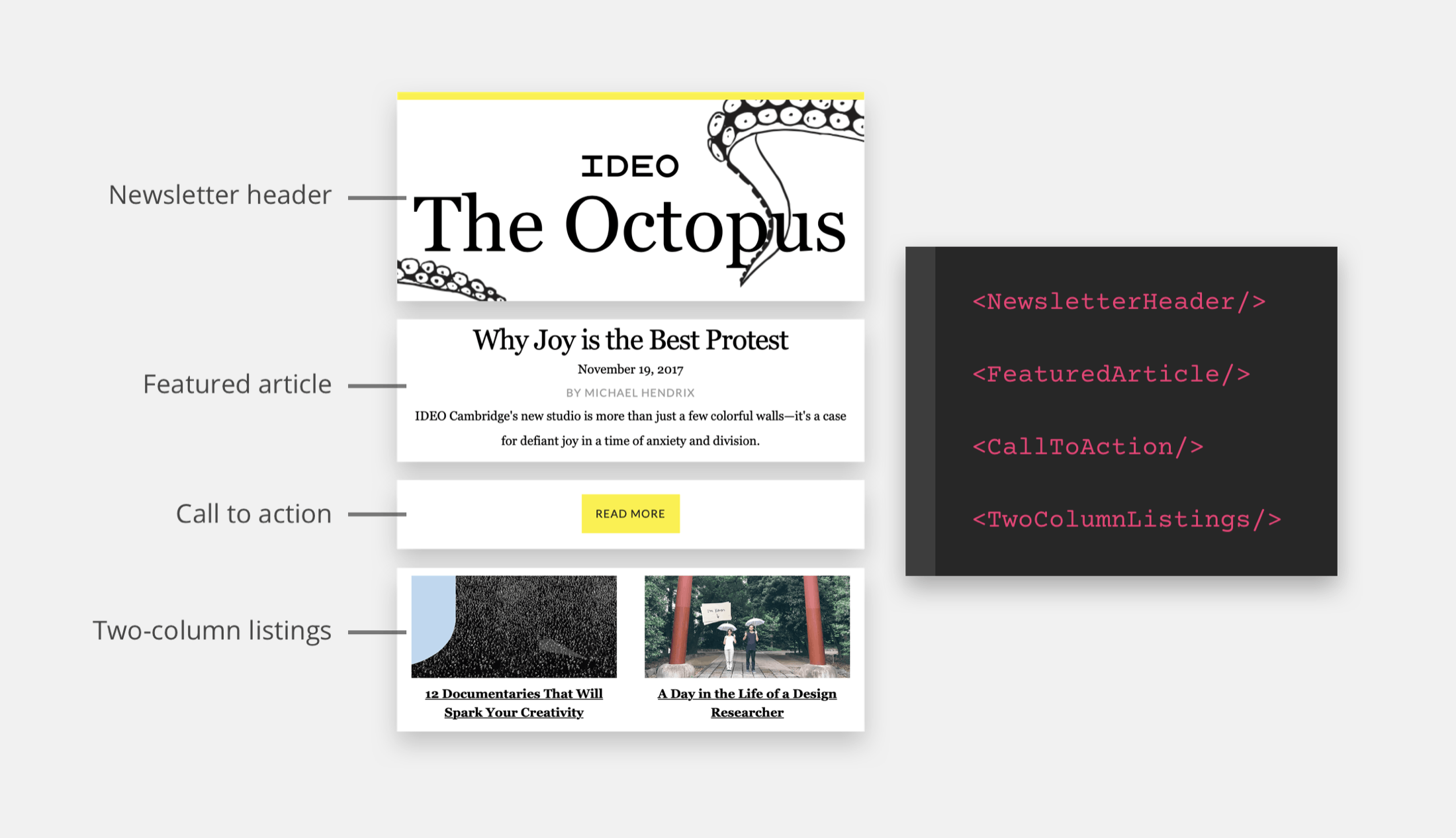Modular design is a method for improving web design and email production workflows by using components-based design and layout patterns that overlap structural coding practices.
This modular design approach breaks apart content and design elements and puts them back together along these guidelines:
- Content - text pieces and images
- Components - reusable, standalone elements like buttons and titles, the building blocks of your content
- Regions - groups of content content pieces and components, arranged in a very specific way
- Sections - stackable containers of regions between the header and footer to create an overall layout
Design system components and their layout
A design system focuses on the components aspect and uses documentation to explain how the components should be used. Using modular design definitions further provides context for these design components and shows how all the pieces of a design come together.
A modular design framework takes into account content pieces as well as layout for components and content. While a layout of components is essentially just made up of boxes within boxes, calling them sections vs regions vs components and content provides a more tangible model to work with.
"Using modular design definitions further provides context for these design components and shows how all the pieces of a design come together."
Coding modularly and using a common language
When it comes to going from design to code, being modular in your programming essentially means creating a library of code snippets that you can reuse. Design components, regions, and sections can be coded as templates for content and future creatives.
The names you give your various design areas can also be used as labels around your code (also known as "design tokens") so both designers and developers (and other team members) can share the same language around the design.
Content text and images are treated as data. This helps separate content from structure and visuals and allows making your content dynamic by using variables and logic statements.
The benefits of having a modular design and a design system are well-known: increased efficiency, scalability, and cost-savings. And a proper workflow like the modular design method for developing your modular design offers added clarity to the process.
"The benefits of having a modular design and a design system are well-known: increased efficiency, scalability, and cost-savings."
Blocks Edit's library of tags follows the modular design method to making a template editable in the visual editor. And we offer a modular design setup package to help you review and code your template to follow it as well.


